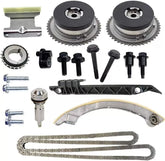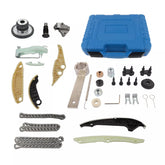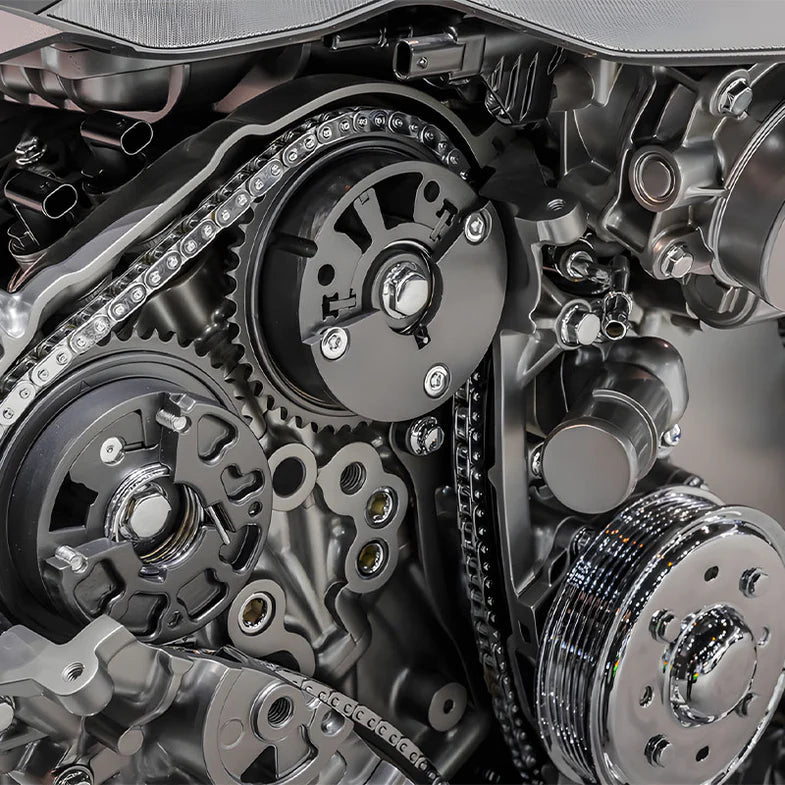What is a Camshaft in Cars: A Detailed Guideline You Need To Know
What is a Camshaft?
A camshaft is a metal horizontal bar that has either iron or steel as its main parts located on top of the cylinders above the engine. It functions in the intermixing of air with fuel and out of the combustion structure, i.e., to transform rotational motion into linear motion.

Parts of A Camshaft
Like other car parts, the camshaft comprises various parts, some of which include:
Cam: This is the most important part of a camshaft. It is responsible for the closing and opening of the valves.
Cam follower: the part of the camshaft that has been driven.
Driveshaft: This feature enables movement of the whole camshaft’s structure, and we see it linked with a belt to another engine’s part called the crankshaft or works autonomously.
Shaft: This is the supporting component of the camshaft, and it binds the other parts together. It can endure stressful workloads while the combustion engine is running.
Bearings: This part makes sure that the shaft is in its upright position. It is also an important component because it helps reduce friction when the camshaft is in operation. Additionally, it has a special tool for replacing the oil in the camshaft.
Lobes: This structure provides the camshaft with the opportunity to exchange fuel-filled gases. Also, the lobes’ speed is relative to the engine’s speed.
Chain sprocket: has a connection to the camshaft at one end. In addition, the chain sprocket along with the timing belt help keep the timing between the camshaft and crankshaft in sync.
Working Principles of A Camshaft
The aim of the camshaft is to open and close the intake and exhaust valves, respectively, at proper times. As earlier mentioned, the camshaft is connected to the crankshaft with a belt, and the rate of speed of the crankshaft is twice that of the camshaft. In a four-stroke combustible engine, the four categories include intake, compression, ignition, and exhaust.
In the intake stroke, when the intake valve completely opens air and fuel are taken into the cylinder responsible for combustion. As the crank begins to rotate, the piston starts moving in the upward direction with both valves closed into the second stroke of the combustion engine (compression stroke). The spark plug projects some level of crank motion BTDC (before the top dead center). When the piston finally reaches the TDC (top dead center), thermal expansion in combination with combustion is in progress.
Furthermore, at very high speeds, the flame fires across the top layer of the pistol. The thermal energy working on the piston works on the connecting rod and crankshaft journal, thereby converting linear motion into rotational motion. When the crankshaft returns, the piston moves back to the upper stroke, which brings out hot, fuel-mixed air through the exhaust valve. This valve action is the result of cam lobe actions against the pushrod, rocker arm, lifter, and valve stem.
Types Of Camshafts In Car Engines
There are different types of camshafts each categorized based on the following:
- Based on lifters used by the camshafts
Based on the camshaft’s shape
Based On Lifters Used By The Camshafts
In car engines, there are two major types of camshafts based on the lifters used; they include:
- Flat-tappet Camshafts
-
This camshaft is a very old technology that has been in the automobile industry for years. They are, however, very affordable, produce a high amount of power, and do not wear out over time, which means there is no need for special maintenance. In addition, this type of camshaft must work with hydraulic lifters or followers. It also makes use of an oil-coated plunger to protect the valves.
In terms of appearance, the flat tappet camshafts look flat at first glance, but with further inspection, their complex geometry becomes noticeable. Moreover, the face of the hydraulic lifters on the flat tappet has a big circular cross-section. On the other hand, the taper makes sure the lobe is well confined. This makes the tappet run well during rotation.
- Roller Camshafts
-
As the name implies, this type of camshaft uses a roller wheel (cam follower) and a tappet for its operations. It literally only rolls across the lobe of the camshaft. Roller camshafts are more expensive than flat tappets, but they also produce more power and last longer.
In addition, roller camshafts can reduce friction and produce a more curved ramp in the camshaft, which increases the time frame. In contrast to flat-tappet camshafts that require break-in processes, roller camshafts do not need break-in.
When it comes to prices, mechanical camshafts are cheaper than hydraulic roller camshafts, and they also produce quite a bit of power, which makes the industry consider them a standard power generator. But its disadvantage is that it requires constant maintenance.
Based On the Camshaft’s Shape
- Cylindrical Camshafts
- From its name, it is cylindrical in shape, and it is also known as a barrel or drum cam. Its surface has a groove cut into it, which the cam follower makes use of for motion.
- Radical Camshafts
- This can also be known as a “disc clam.” It has an axis that is directly normal to the follower’s movement path. Also, radical Camshafts possess a shapeless contour plate that transforms the motion of the cam into that of the cam follower.
- Conjugate Camshafts
- A conjugate camshaft comprises two rollers that connect the cam follower or driver together. These rollers restrict the motion of other parts, which results in the elimination of noise for quiet machine processes. They are most suitable in areas that require the silent operation of the camshaft.
- Spherical Camshafts
- They are spherical in shape. A groove is located on the curved design. In this type of camshaft, the speed of the cam follower is perpendicular to the rotational part of the spherical cam.
- Wedge camshafts
- Their endpoints are very sharp, along with a wide basement. However, in wedge cams, the driver moves in a sliding manner in relation to the camshaft.
Failure of Camshaft and Possible Solutions
Just like other machine parts, camshafts also have their cons, and a worn camshaft can increase the damage risk to other parts of the car like the cylinder head, crankshaft, etc. The following are ways to recognize possible failures in a camshaft:
Flashing check engine light
- This is a type of warning light that comes on when the car’s technology discovers a problem that might lead to serious damage or misfire. The check engine light serves as a diagnostic tool for checking the problems in the engine of a vehicle.
Noisy Tapping Sounds
- This is one of the most significant symptoms of a bad camshaft. The valve train starts producing strange sounds when it starts failing. However, the strange sounds are mostly because of reduced efficiency in hydraulic lifters than problems associated with the cam lobes.
Metal Particles in the Engine Oil
- A failed camshaft can lead to the spread of metal debris across the car’s engine. Most of the time, the metal debris is not visible on the dipstick, but after pouring the oil out, there may be metal particles or debris.
Cylinder Misfire
- This causes a car with a worn camshaft to fail due to inefficiency in the engine. The common signs of a cylinder misfire are sudden loss of power in the car, shaking in a forceful manner, and sometimes, overconsumption of fuel can be a result of a cylinder misfire.
Increased Gas Emissions
- When a camshaft is damaged, it results in misfires in the car’s engine, which also lead to an increase in emissions.
Visible Signs of Damage
- Worn lobes and scored journals are all visible signs of failed conditions that have spoiled the camshaft.
Solutions
A damaged camshaft is fixable especially when you know how a camshaft work. However, it is always better to consult a professional for appropriate repairs. This is a result of detecting the problem and providing the best solutions to fix the camshaft’s issues. However, based on the damages caused by wear and tear, the following are possible solutions:
Get a New Camshaft
- Aside from knowing how the camshaft and crankshaft function, the best solution when you have a damaged camshaft is to get a new one. Getting a new camshaft will remove the tendency of past problems. However, it can be quite expensive to buy a new camshaft. You should consider getting a new one when you have a broken lobe, the wear on the lobe is excessive, the case hardening depth is too small, or the camshaft has a bent shape.
Have Your Damaged Engine Camshaft Properly Machined
- Having your damaged engine camshaft properly machined is a far less expensive solution compared to the first. However, the degree of damage can determine whether the method is viable and the price of remanufacturing. Proper rebuilding is possible for camshafts with worn lobes.
Weld the Damaged Camshaft
- Welding is suitable for rebuilding a camshaft with wear (although not too much). It involves adding a harder material to fill in the worn part and grinding it to meet the proper specifications.




